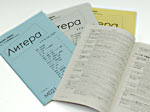-

アウシュヴィッツ建設管理局 死の収容所の設計(ポーランド・英語)
Auschwitz Bauleitung. Designing a death camp./ tłumaczenie: W. Zbirohowski-Kościa. (in Polish, English)
Cywiński P.M.A.
Oświęcim, Wydawnictwo Państwowego Muzeum Auschwitz-Birkenau 231 c. hard2023 年 ISBN 9788377043806 R259223
“Auschwitz Bauleitung. Designing a Death Camp” is the new English-Polish publication of the Museum written by the director Dr. Piotr M. A. Cywiński. It shows a harrowing depiction of Auschwitz camp, functioning as “machine of death” and designed in great detail. The essence and historical background of this study is constituted by plans which were created in Auschwitz Bauleitung – construction office of the camp. This office, headed by SS men that used the labor of prisoners who were technicians by education, was engaged in designing of basically all the constructions built in the camp site. During the four and a half years of its existence, the Bauleitung architects prepared vast numbers of plans and maps, technical drawings, plan views and cross-sections, façade designs, models as well as furniture and interior designs, cost estimates as well as photographic documentation for the camp’s ongoing needs and future expansion. Many of the plans and designs resulted in the actual construction of the buildings, but there were also plans that were never realised or simply rejected during the war. In other cases, there were several different designs for the same building, which indicates a complex decision-making process.
‘An analysis of the plans made by the Bauleitung shows that each stage in its creation and expansion – even taking into account decision-making inconsistencies and logistical difficulties resulting from war – was assessed, critically appraised, redesigned and finally approved at various administrative levels. All aspects of German construction engineering, including land drainage, hydrology and road construction, were used to build practically from scratch and within a relativity short space of time thousands of extremely diverse structures and installations: prison blocks and barracks, watch towers, crematoria, gas chambers, railway ramps, water supply networks, drainage ditches, model farms, vast factory halls, entire residential estates, army barracks, offices and hospitals – in short, all that was necessary for the Auschwitz camp and its numerous affiliates to function,’ Dr. Piotr Cywiński wrote.
This book contains over 130 large color scans of architectural sketches of Auschwitz, specially selected for their significance in illustrating the very conscious, conceptual way in which the camp was created and expanded. Wherever possible, they have been complemented by photographs from SS documentation files.
'The narrative of this publication focuses on the main phases and areas of the development and expansion of Auschwitz, and tries as much as possible to include the main actors, that is, the SS decision-makers, the prisoner architects and engineers whom the Germans had forced to work on these projects as well as vast numbers of prisoner slave labourers who were made to toil to the point of exhaustion on major Auschwitz construction sites,’ one reads.
Of the more than a hundred Baubüro prisoner specialists – mainly technicians, engineers and architects – almost half were shot or hanged, ten were sent to the penal company, and 25 were transferred to other camps as a punishment. Only two of the SS men responsible for the operation of the Bauleitung were trialed. Both were acquitted in Austria.
The Bauleitung plans, together with their technical, financial and photographic documentation, have to a large extent been preserved. Today, a large part of them are found in the Auschwitz-Birkenau State Museum Archives, some are also found in the State Archive of the Russian Federation in Moscow. Some of the copies that had originally been sent to Berlin for approval are now also found in German archives. Several reached the archives of Yad Vashem in Jerusalem.
The book “Auschwitz Bauleitung. Designing a Death Camp” was published with the support of the Polish Ministry of Culture and National Heritage.価格(税込み) \11,770
在庫を超える数量の場合は、ご相談とさせていただきます。

![NAUKA JAPAN [店内にロシア書籍5000冊以上を常備ロシア書籍・新聞雑誌・映画DVD・朗読CD・地図他、欧米書籍]](materials/copy/top_copy1.gif)
![NAUKA JAPAN [店内にロシア書籍5000冊以上を常備ロシア書籍・新聞雑誌・映画DVD・朗読CD・地図他、欧米書籍]](materials/book11.jpg)


![NAUKA JAPAN [店内にロシア書籍5000冊以上を常備ロシア書籍・新聞雑誌・映画DVD・朗読CD・地図他、欧米書籍] 店舗外観](materials/image02.jpg)
![NAUKA JAPAN [店内にロシア書籍5000冊以上を常備ロシア書籍・新聞雑誌・映画DVD・朗読CD・地図他、欧米書籍] 店内イメージ](materials/image03.jpg)
![NAUKA JAPAN [店内にロシア書籍5000冊以上を常備ロシア書籍・新聞雑誌・映画DVD・朗読CD・地図他、欧米書籍] 店内イメージ](materials/image04.jpg)






